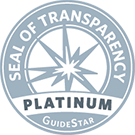
We spend a lot of time in fundraising polishing the stone – getting better and better at what we already know how to do. Writing a more compelling appeal letter, sharpening our case statement for foundation proposals, running a bar party for our junior board.
But sometimes you need to take a step outside – explore a new sector, or subsector, that’s never given you funding before.
To approach the holy grail of a “diversified funding base,” we have to go beyond our comfort zone.
Let’s say you want to go after corporate sponsorship for your annual youth basketball tournament. You don’t know the anyone in the field of sports-based product manufacturers, youth-oriented sports refreshments, players from the local team – it’s a new universe for you and everyone on your staff/board.
The first step is to brainstorm a list of the possible – both actual prospects (Jon Halliday from the local team) and specific markets (retail sportswear stores). Think about what they’d get out of funding you – not the other way around.
But the next step is not to approach them – it’s to find someone who can start you off with a little advice. You need to figure out the lay of the land.
Beware of suppositions masquerading as fact. Plenty of times board members come up with a “great idea” – having no conception of the reality of donor motivation, linkage, or your nonprofit’s place in the ecosystem of similar groups. And while we applaud our board members for being so committed and involved – their suggestions are just a starting place.
Someone, somewhere, will be able to reach out to the sister of their college roommate, or a friend from high school’s cousin, who’s in the field in question (or related to it), and who’d be happy to give you some advice for the price of a cup of coffee.
If you ask for guidance and it turns out it’s a good idea, you’ll get a good sense of your next steps – and, in time, you can network your way to someone who can get your nonprofit a hearing from someone else with influence over funding decisions.
And if your advisor tells you it’s too far-fetched, you have a shield with which to go back to your board member and tell them you’ve followed up, and that someone elsesaid it was a bad idea (and why).
It takes lead time to penetrate a new market, and It may take some investment to gain real traction. Who knows, there might have been a good reason your organization didn’t go down that route before, which you’ll find out in your questioning phase.
But if you don’t start this process, once every year or two, you’ll be stuck in the same-old, same-old that board members complain about ad nauseum – going back to the same well with the same product, year after year.
There’s no reason you can’t conduct your own mini-feasibility study – in fact, it’s essential when entering a new funding field.




